
Shrubs Around Las Vegas, Vegetation Around Las Vegas
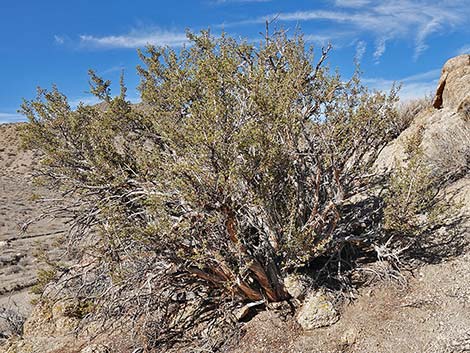 |
General: Desert Bitterbrush (Purshia glandulosa) is evergreen, spreading, many branched shrub typically 6-feet wide and 6-feet high with many horizontal (sprawling, unkempt) gray stems and a rounded crown. Twigs may be sticky. Leaves are small, wedge-shaped, and usually with 3 lobes. The central lobe may have a spine or a point. The upper leaf surface is green with a few long hairs and sticky glands. The lower leaf surface is densely woolly with in-rolled edges. The short-lived flowers have five white petals and many stamens. One, sometimes two, fruits develop with a short, non-plumed appendage that is stiff-hairy and may be slightly hooked. Desert Bitterbrush is not common around Las Vegas. Look for this species in vegetation communities in middle-elevation canyons and ridges in the Upper Sonoran (Pinyon-Juniper Woodland) life zone on the west side of the Spring Mountains, Gold Butte National Monument, and northward in Basin and Range National Monument. This species is more common north of Las Vegas. Family: Rose (Rosaceae). Other names: P. tridentata var. glandulosa. Antelope Bitterbrush, Mojave Antelope Brush. |
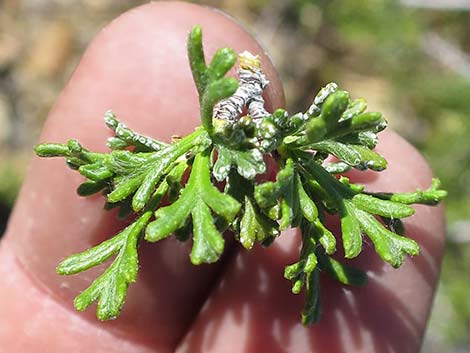 |
Plant Form: Spreading, many-branched, large shrub (many horizontal, sprawling, unkempt) with gray stems and a rounded crown. Height: Usually 4-6 feet high (to about 15 feet). Bark: Thin, grayish to brown. Stems: Young twigs gray to reddish brown. Many short, spur-like branchlets. Gland hairs sticky. Leaves: Evergreen. Small (1/4 to 3/4 inches long). Leaves wedge-shaped usually with 3 lobes (central lobe may have a spine); green above with a few hairs and and gray-white (densely white-woolly) below; short petiole, edges entire. Non-aromatic, which is in contrast to Big Sagebrush (Artemisia tridentata) that has a similarly shaped leaf. |
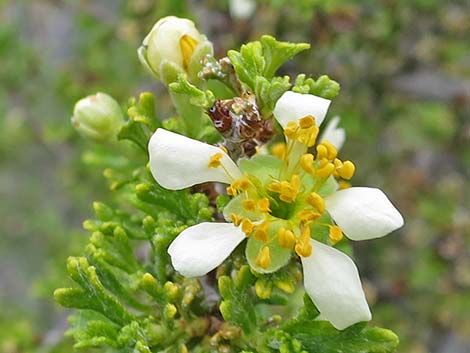 |
Flowers: Small (1/2 inch across) white, typical wildrose-type with flared petals and many stamens. Petals 5; sepals 5. Flowers borne singly at tips of shoots. Blooms in spring. Seeds: One, or sometimes two, fruits develop with a short, non-plumed appendage that is stiff-hairy and may be slightly hooked. Habitat: Dry, well-drained sandy, gravelly, and rocky soils on upper bajadas and moderate slopes in the lower mountains. Elevation: 1,500 to 11,500 feet Distribution: California deserts to western Arizona, southwest Utah, and northern Nevada. |
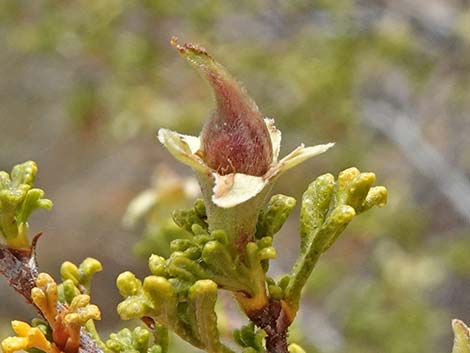 |
Comments: Desert Bitterbrush, Stansbury Cliffrose, and Antelope Bitterbrush occur in the same habitats, flowering during spring, have similar flowers and leaves, and hybridize. Cliffrose tends to grow as an upright subtree (to 8-9 feet), while the Bitterbrushes tend to be a lower, spreading shrubs. Separating the Bitterbrushes is best done using leaves: in-rolled edges in Desert Bitterbrush and flat edges in Antelope Bitterbrush. Bitterbrush is important browse for cattle, sheep, and goats, especially in late fall and winter when the ground is snow-covered. It is usually not eaten by horses. It is excellent browse for many species of wildlife, and it can be critical winter browse for mule deer. Desert Bitterbrush apparently arose via hybridization between Stansbury Cliffrose and Antelope Bitterbrush, and it can hybridize with both parental species. |
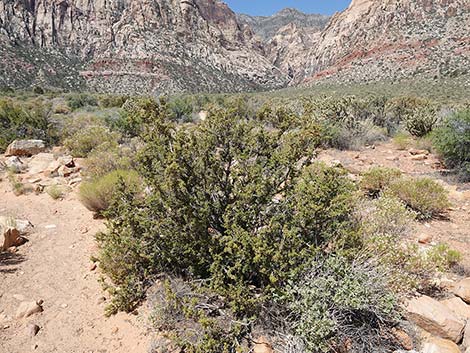 |
 |
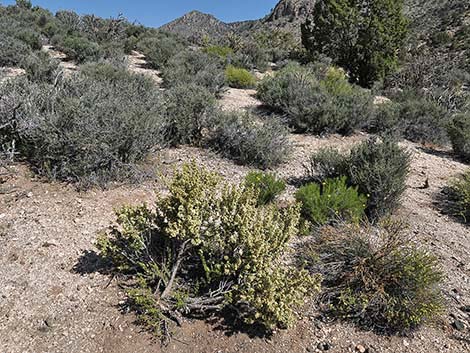 |
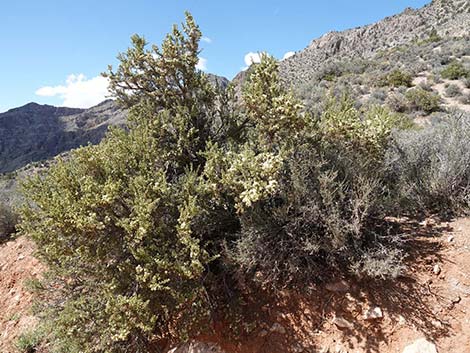 |
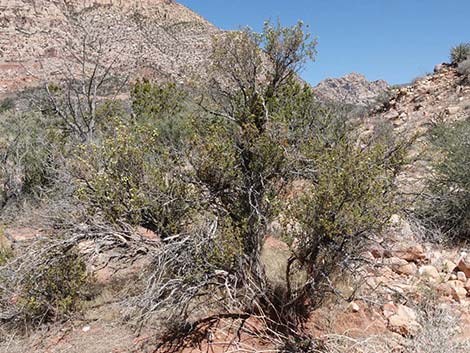 |
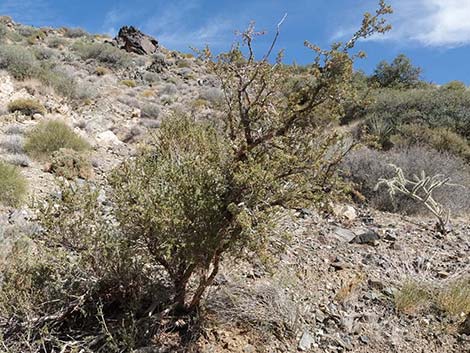 |
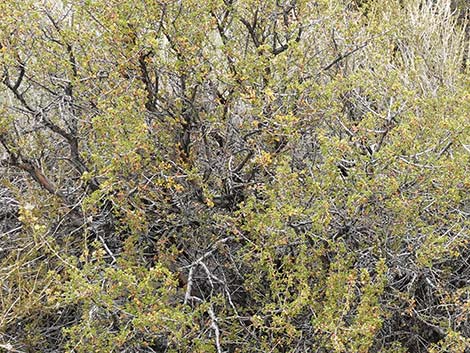 |
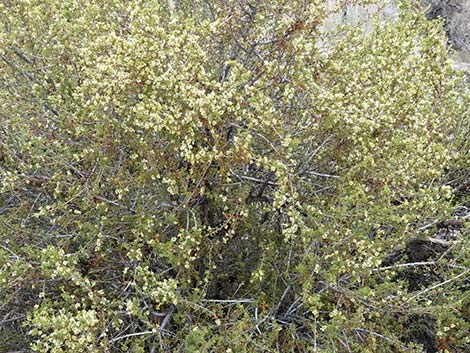 |
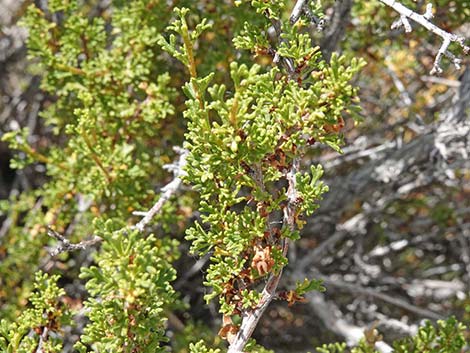 |
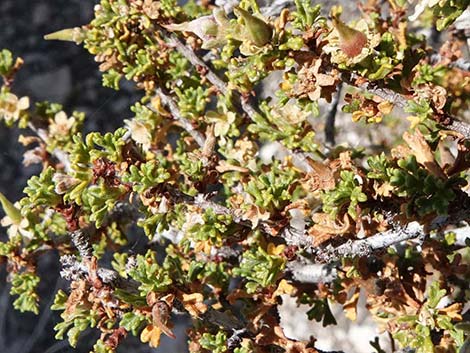 |
 Sticky, glandular stems and leaves |
 Sticky, glandular stems and leaves |
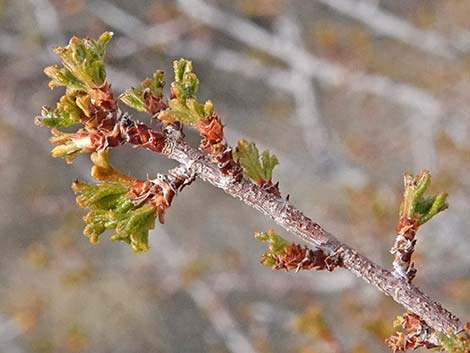 |
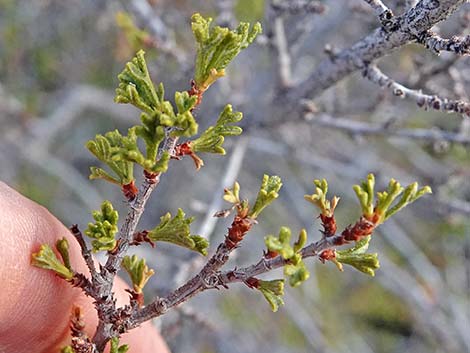 |
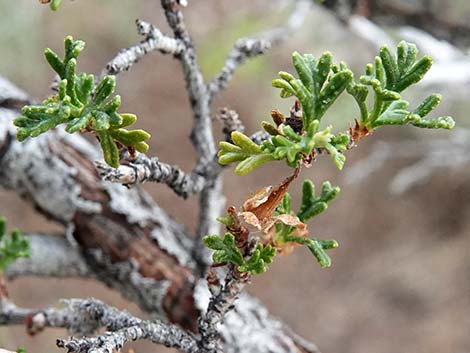 |
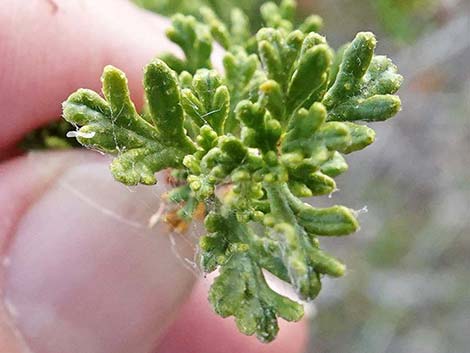 |
 |
 |
 3-forked, glandular leaves, dorsal surfaces |
 3-forked glandular leaves, ventral surfaces are in-rolled |
 Individual leaves are small |
 Individual leaves are small |
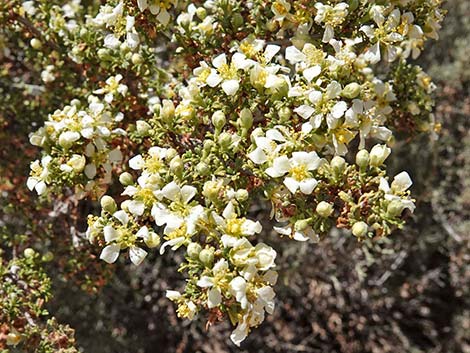 |
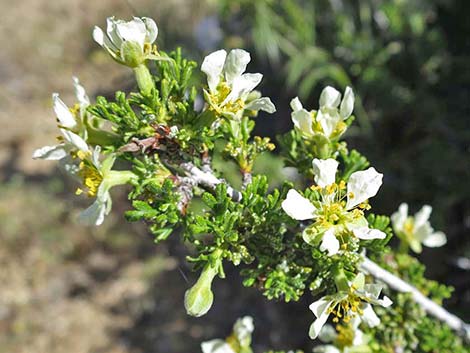 |
 |
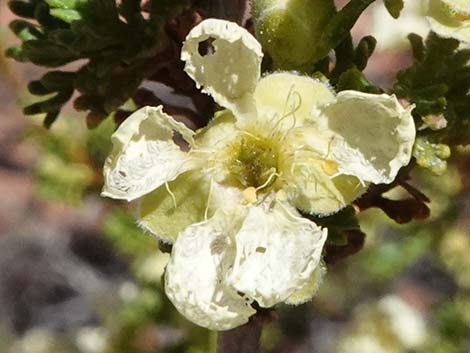 |
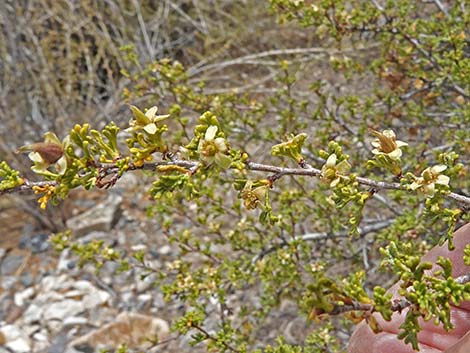 |
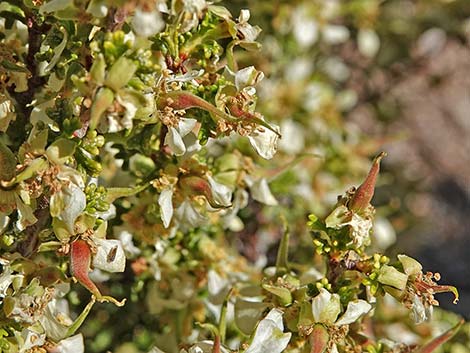 |
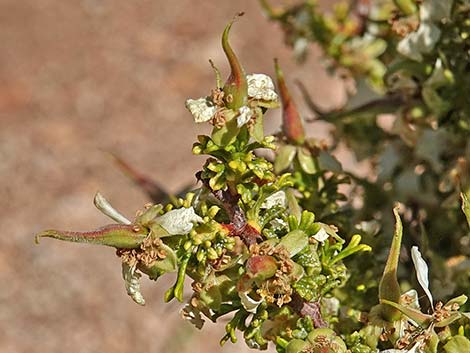 |
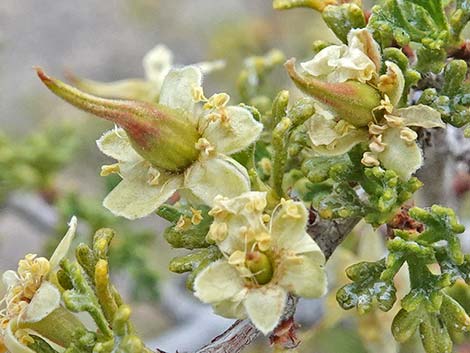 |
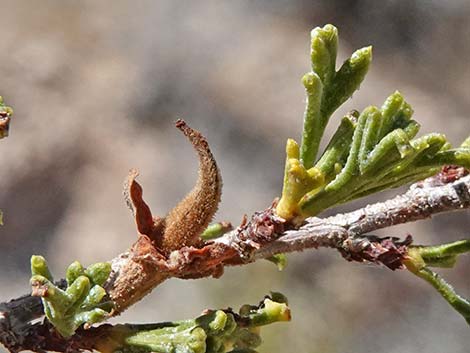 Fruits normally are one per flower |
 Fruits normally are one per flower |
 Fruits occasionally are two per flower |
 Fruits occasionally are two per flower |
 Two seeds and a leaf |
 Fruits develop with a short, stiff-hairy, non-plumed appendage |
 Two fruits from one flower |
 Two fruits from one flower; it appears that one is non-viable |
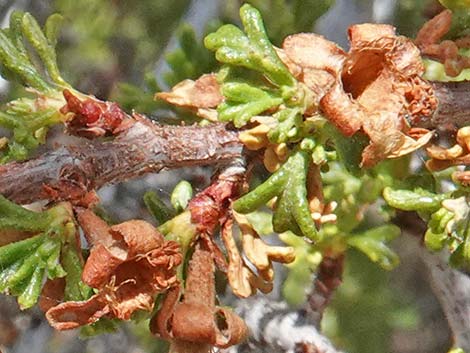 Empty flower remains after the fruit falls out |
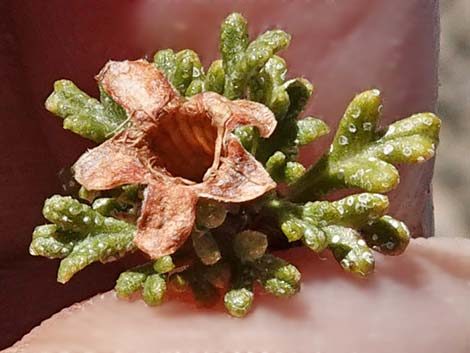 Empty flower remains after the fruit falls out |
Note: All distances, elevations, and other facts are approximate. Names generally follow the USDA database.
![]() ; Last updated 250715
; Last updated 250715
| All Shrubs | Plant Species Index | Glossary | Copyright, Conditions, Disclaimer | Home |